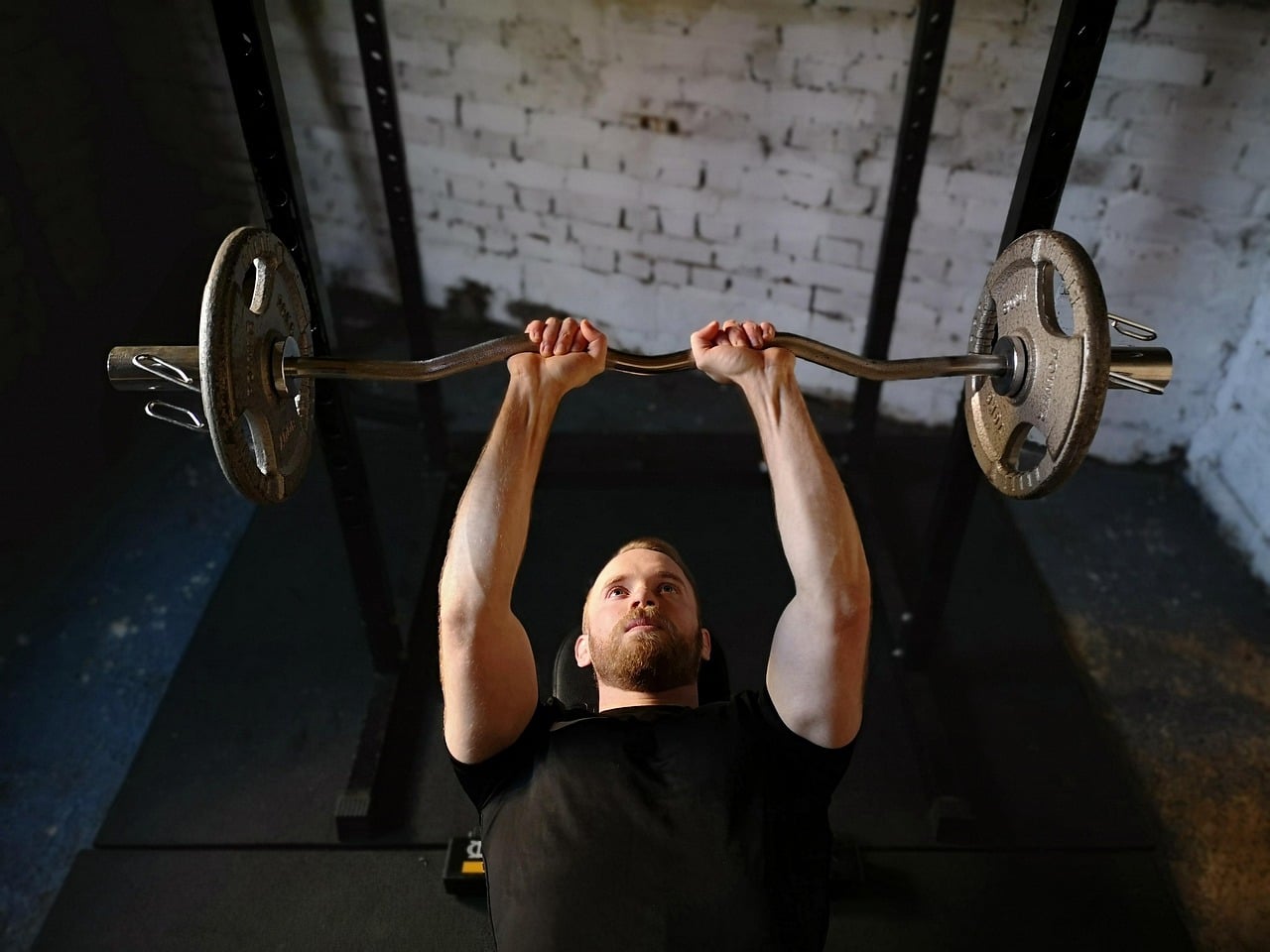Is male pattern baldness high testosterone related? The answer is more complex than simply attributing hair loss to high or low testosterone levels. We bust myths, explore the science behind male baldness, and give you tips on preventing the Magic 8 Ball effect.
What is Male Pattern Baldness?
Male pattern baldness, also known as androgenetic alopecia, is a widespread condition causing hair loss on the scalp’s crown and top regions. This common form of hair loss affects millions of men worldwide, with symptoms typically appearing as a receding hairline or thinning at the crown (National Library of Medicine).
Androgenetic alopecia is a hereditary condition, with genetic factors determining an individual’s predisposition to baldness. A man’s hair follicles become increasingly sensitive to DHT (dihydrotestosterone), causing them to shrink over time and produce thinner, shorter hair.
Although many associate baldness with high testosterone levels, research shows that male hair loss stems from genetic sensitivity to hormones rather than levels of testosterone themselves (National Library of Medicine). Pattern baldness often progresses gradually with age, though some men experience premature balding in their twenties or thirties.
The Role of Sex Hormones in Hair Loss
Sex hormones influence both hair growth and loss, with testosterone playing a particularly crucial role in this process. Testosterone itself doesn’t directly cause baldness; instead, an enzyme converts testosterone into dihydrotestosterone (DHT), a more potent androgen (Cleveland Clinic).
As DHT binds to androgen receptors in the hair follicles, it causes them to shrink and produce thinner, shorter hair gradually. This thinning primarily affects follicles on the scalp while often sparing body hair and facial hair, explaining why many balding men maintain growth in these areas.
Hormonal imbalances, whether from high testosterone levels or other hormones, can disrupt normal hair growth cycles across the body. The relationship between hormone levels and hair loss is complex, as both high and low testosterone levels contribute to different types of hair loss.
At its core, genetic factors determine how sensitive your hair follicles are to DHT. These genetic factors explain why some men with normal testosterone levels experience significant baldness while others with high testosterone maintain a full head of hair. This genetic sensitivity, rather than absolute hormone levels, is the determining factor in male pattern hair loss.
Debunking the Myths: Bald Men and Testosterone
Many misconceptions surround the relationship between baldness and testosterone levels, leading to widespread myths about bald men. Let’s examine and debunk some of the most common myths about male pattern baldness and its connection to hormone levels.
Myth #1: Bald men have higher testosterone levels than men with full heads of hair.
Scientific evidence does not support this popular belief, as previous studies show no consistent correlation between baldness and high testosterone (National Library of Medicine). Men with low testosterone levels can experience significant hair loss, while others with high testosterone levels maintain a full head of hair throughout their lives.
Myth #2: Hair loss indicates too much testosterone in the body.
Male pattern baldness is a product of genetic sensitivity to hormones, not by testosterone levels themselves. The key factor is how sensitive your hair follicles are to DHT, which your genes determine rather than by having excess testosterone.
Myth #3: Balding men are more virile and have a higher sex drive.
While testosterone does influence sex drive, the connection between baldness and sexual performance is another myth without scientific backing. Androgen receptors and genetic factors responsible for baldness operate independently from those affecting other male characteristics related to virility. In fact, certain medications like Finasteride that address baldness can lower sex drive (George Washington University).
The Science Behind Hair Loss: DHT and Androgenic Alopecia
DHT (dihydrotestosterone) is a potent androgen hormone that plays roles in male development and androgenic alopecia (Cleveland Clinic). This hormone influences the development of male sexual characteristics throughout life, beginning during fetal development and continuing through puberty. During adulthood, DHT doesn’t impact male characteristic development, but rather contributes to enlarged prostates and pattern baldness..
The body naturally converts approximately 10% of testosterone into DHT daily through an enzyme called 5-alpha-reductase. This conversion primarily occurs in specific tissues, including the genital skin, scalp, and prostate, where DHT concentrations can become significantly higher than in the bloodstream (Cleveland Clinic).
DHT levels are naturally higher in males due to their higher baseline testosterone levels, creating greater potential for hair loss in genetically predisposed individuals. When DHT binds to androgen receptors in susceptible hair follicles, it triggers a process that gradually shrinks these follicles over time.
This miniaturization process is the hallmark of androgenic alopecia, causing affected follicles to produce increasingly thinner and shorter hairs. Eventually, these miniaturized follicles stop producing visible hair altogether, leading to the characteristic pattern of baldness seen in male pattern hair loss.

The Impact of High and Low Testosterone on Hair Loss
While many assume high testosterone directly causes baldness, the real culprit in male pattern baldness is DHT (dihydrotestosterone). DHT affects genetically sensitive hair follicles regardless of whether overall testosterone levels are high, normal, or low.
Low testosterone levels can contribute to different types of hair loss, particularly affecting body hair and facial hair growth. Men with low testosterone might notice thinning across their entire body rather than just the characteristic crown and hairline recession of male pattern baldness.
Symptoms of Hormonal Imbalances
Abnormal testosterone levels can manifest through various physical and psychological symptoms that impact multiple aspects of health and overall well-being. Both high and low testosterone states create distinct symptom patterns that can impact quality of life.
Signs of High Testosterone:
- Excessive body and facial hair growth
- Increased aggression or mood swings
- Acne or oily skin
- High blood pressure
- Enlarged prostate
- Risk-taking behavior
- Sleep disturbances
Signs of Low Testosterone:
- Decreased sex drive and erectile dysfunction
- Fatigue and low energy
- Reduced muscle mass
- Increased body fat or weight loss challenges
- Depression or mental health concerns
- Decreased bone density
- Difficulty concentrating
- Hair loss on the body and face
Concerned about hormonal imbalances affecting your hair or overall health? Schedule a visit with the specialists at Huddle Men’s Health for comprehensive testing and personalized treatment options.
Treatments for Hair Loss and Hormonal Imbalances
Often, addressing hair loss requires a multi-faceted approach targeting both symptoms and underlying hormonal factors. Treatment options vary widely in effectiveness, cost, and potential side effects, making personalized medical guidance essential for optimal results. Some treatment options include:
- Finasteride: An oral medication that blocks the enzyme that converts testosterone to DHT, potentially slowing or stopping further hair loss. Medical professionals prescribe Finastride for males with BPH, as it treats symptoms related to an enlarged prostate and hair loss (Mayo Clinic).
- Minoxidil: A topical treatment that improves blood flow to hair follicles and stimulates hair regrowth in men and women. Yet, science doesn’t fully understand the underlying mechanisms of how Minoxidil does this (Mayo Clinic).
- Hormone therapy: Treatment addressing underlying testosterone imbalances. Injected TRT treatment is an effective method for addressing low testosterone levels and is available from providers like Huddle Men’s Health.
- Natural DHT blockers: Plant-based supplements like palmetto, though scientific evidence supporting effectiveness remains limited (National Library of Medicine).
- Hair transplantation: Surgical option for moving existing follicles to thinning areas.
- Laser therapy: Low-level light treatments that may stimulate follicle activity.
Anyone concerned about androgenetic alopecia or suspecting hormonal imbalances should consult with a doctor for proper diagnosis and treatment recommendations. Early intervention often yields better results, particularly with treatments designed to preserve existing hair rather than regrow lost follicles.
The Genetic Link to Male Pattern Baldness
Male pattern baldness has strong genetic roots, with sensitivity to DHT determined by genes inherited from both parents. Interestingly, the X chromosome carries the primary genetic factors influencing baldness, which men inherit exclusively from their mothers.
Since men possess only one X chromosome while women have two, male pattern baldness can express itself more readily in men. That male predominance is because men don’t have a second X chromosome to offset the baldness genes. This genetic arrangement helps explain why baldness appears to “skip generations” or affect siblings differently despite shared parentage (National Library of Medicine).
Effective Hair Loss Prevention and Management with Huddle Men’s Health
Preventing and managing hair loss means addressing internal factors like genetics and androgens, as well as external factors affecting scalp health. A holistic approach includes maintaining proper nutrition rich in vitamins that support follicle health, managing stress levels, which can exacerbate hormonal imbalances, and adopting gentle hair care practices that minimize damage to existing hair.
Early intervention yields better results, as treatments like finasteride and minoxidil are more effective at maintaining existing hair than regrowing what’s already gone. For those concerned about using medications, some natural approaches may help manage DHT levels. Yet, results vary significantly between individuals based on their genetic sensitivity and the underlying causes of their hair loss.
Concerned about hair loss or looking to optimize your hair health regimen? Schedule your appointment with the specialists at Huddle Men’s Health, who provide personalized evaluation and treatment. Our comprehensive approach addresses both the physical and psychological aspects of hair loss, helping you develop strategies that work for your unique situation and lifestyle.
FAQs
Does high testosterone cause baldness?
No, high testosterone levels do not directly cause baldness. Instead, DHT (dihydrotestosterone), a byproduct of testosterone, is responsible for male pattern baldness in men who are genetically sensitive to it.
Is balding a sign of high testosterone?
Not necessarily. Baldness has links to genetics and DHT sensitivity, not testosterone levels. Some men with high testosterone never go bald, while others with low testosterone experience hair loss.
Can low testosterone cause hair loss?
Yes, low testosterone levels can lead to thinner body and facial hair rather than scalp hair loss. However, male pattern baldness is a result of genetic factors and DHT, not low testosterone.
What are the best treatments for hair loss caused by DHT?
Treatments like finasteride (DHT blocker) and minoxidil (topical solution) can help slow hair loss and promote regrowth. Hair transplants and lifestyle changes may also help manage hair loss.
How can I prevent hair loss if I have high testosterone?
If you are genetically predisposed to male pattern baldness, reducing DHT levels with medications like finasteride may help. Maintaining a healthy diet, reducing stress, and using gentle hair care can also support scalp health.




